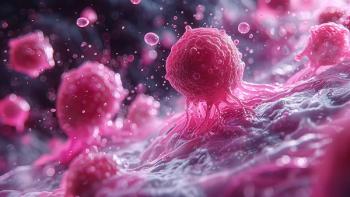
- BioPharm International-11-02-2012
- Volume 2012 Supplement
- Issue 2
Aligning Manufacturing and Business Strategies with Single-Use Systems
The authors explain why Catalent decided to transition from stainless steel to single-use systems.
There has been a rising demand for biologiccompounds in recent years, but biomanufacturingprocesses have met this challengethrough technology, innovation, andhard work. Many of the changes that havetaken place in biomanufacturing have been stepchanges. For example, as biomanufacturing hasshifted from unmodified organisms, such as plantsand pigs, to recombinant cells grown in bioreactors,expression levels have increased from milligramsper liter to grams per liter. This expressionincrease, however, has resulted in many facilitieshaving mismatched upstream and downstreamcapacities. Companies that implemented new manufacturingstrategies to adjust and adapt to changingprocesses have been able to provide reliablysourced products, while those companies that miscalculateddemands and capacities have becomeacquisition targets.
By the end of 2010, Catalent had grown out of its current manufacturing facility. After identifying a new location,the company began to evaluate single-use systems, which have received growing acceptance in the biopharmaceutical manufacturingindustry because of the associated lower facility and equipment costs, as well as the reduced effort in suite turnovers.Catalent had recently purchased six new stainless-steel reactors and also had experience with this technology. However, afterconsulting with experts, the ultimate choice was made to sell the stainless-steel reactors and to go with single-use reactors,mixers, and tangential flow filtration skids. To aid successful implementation, the company built relationships with thesupplier base by seeking supplier partnerships versus simple transactions. The decision was based on aligningbusiness strategy with manufacturing capabilities. Implementing single-use systems enabled the company to increase the number ofruns it could conduct per year.
Case study
The emergence of single-use technologiesis one of the key changesthat has impacted biopharmaceuticalmanufacturing. In 2010,Catalent faced the decision as towhether to adopt single-use technologiesor to continue with traditionalstainless-steel operations.
In 2001, we transitioned froma bovine transgenic company toinstead focus on mammalian cellline engineering and manufacturing.Our GPEx mammalian expressiontechnology provides shorttimelines and stable production ofbiopharmaceutical proteins, andcan provide a master cell bank candidatein around 4.5 months. Tohelp launch the technology, webuilt our first cGMP facility, whichcomprised two 100L noncGMPstainless steel reactors and two200 L cGMP bioreactor trains. Asthe technology became more wellestablished and utilized withinthe biopharmaceutical industry,we sought to expand the cGMPspace. In 2008, we purchased sixnew stainless‑steel reactors (two100 L bioreactors, and 200 L, 500 L,1000 L, and 2500 L bioreactors).With the economic conditions deterioratingat the time, however, ourexpansion strategy was postponed.The economic downturn changedthe dynamics of the market andventure capital markets slowed, butour expression technology was inhigh demand because of the timesavings it offered in bringing newproducts to the clinic; particularlyfor small- to mid-sized biologicscompanies who were carefully monitoringtheir cash flows. By the endof 2010, we were nearing full capacityso we revisited our expansionplans.
Manufacturing strategy was animportant factor for us. We hadgrown out of our current facility,but we were able to find a nearbysite with a large open area withthirty foot ceilings. This area, an“ideal box,” required minimaldemolition prior to building outsuites, and also allowed us to havesufficient ceiling height to installbioreactors and other equipment.Single-use manufacturing hadevolved rapidly since 2001 and wasbecoming widely accepted by ourtarget segment. Even though we hadsix new stainless‑steel reactors, wedecided to step back and objectivelyevaluate single-use technologies.
We weighed the options on bothsides. Our stainless steel reactorswere already purchased and we hadvast experience with this technology.We also knew that our clientstended to be adverse to change (evenpositive change) because of the cautiousnature of the industry, and thatthere may be concerns about transitioningprocesses traditionally conductedin stainless-steel to single-usetechnologies. Most of the facility andequipment cost savings of single‑useequipment was nullified because ofour previous purchase of stainlesssteelreactors. In the end, however,we based our decision on how toprovide a better service.
Catalent’s market researchindicated that going forward,more products will require scalesof less than 2000 L. In addition,the research showed that companies’acceptance of single-use systemswas significantly risingbecause of the associated lowerfacility and equipment costs, aswell as the reduced effort in suiteturnovers. For multiproduct facilities,single-use systems also offerthe additional benefits of diminishingthe risk of cross contaminationand increasing throughput based onfaster changeovers.
However, there are still risks inthe adoption of a new technologyfor bioreactors, such as extractablesand leachables, continued evolutionof disposable sensors, the serviceof single use systems, a lackof standardization, the challengeto become landfill neutral, the costand supply chain of consumables,and, ultimately, acceptance by ourpotential customers.
To balance the risks of this newmanufacturing strategy, Catalentconsulted with experts and builtrelationships with the supplier baseby seeking supplier partnerships versussimple transactions. Additionally,we are staying active in industryorganizations, such as the Bio-Process Systems Alliance, the ASME BioProcessing Equipment group andPDA to help support our infrastructure(e.g., through guidelines andstandards), and to enable us to betterunderstand different technologiesand trends in the market.
In early 2011, we sold our sixstainless steel reactors and madethe decision to go with single-usereactors, mixers, and tangential flowfiltration skids. This decision wasbased on aligning our business strategywith our manufacturing capabilities.Implementing single-usesystems enabled us to increase thenumber of runs we could conductper year.
Ultimately, single-use systemsprovide us with flexibility andmanufacturing scale to support andsolve the ongoing challenges thatcompanies will continue to face inbiomanufacturing.
Articles in this issue
about 13 years ago
Implementing a Single-Use TFF System in a cGMP Biomanufacturing Facilityabout 13 years ago
Development of a Full Process Train, Single-Use Facilityabout 13 years ago
Analyzing the Best Fit for a Facilityabout 13 years ago
Upstream, Downstream Processing in Motionabout 13 years ago
The Challenges of Adopting Single-Use TechnologyNewsletter
Stay at the forefront of biopharmaceutical innovation—subscribe to BioPharm International for expert insights on drug development, manufacturing, compliance, and more.




